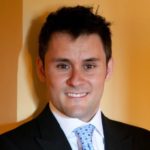 Abstract: As form follows function, so shape governs the properties of structural and material systems. Recent studies on adaptive structures have capitalized on these connections to realize unprecedented tunability of system properties and functionality by passive or active transformations of system configuration. This two-part presentation describes integrated theoretical and experimental research efforts that advance these principles to deliver large control over wave propagation properties of adaptive structural and material systems. In the first part, a method is presented that broadly enhances capabilities for acoustic transducer arrays to guide wave energy via harnessing foldable, origami-based tessellations. The foldable arrays enable orders of magnitude change in acoustic energy delivery to points near and far from the surface of the tessellation using shape transformations and without resorting to digital control, and may find future application for instance for medical ultrasound therapy devices transported and deployed in the human body. In the second part of the presentation, strategies to leverage cellular architecture within elastomeric material systems are described that give rise to unusually large elastic wave damping properties. Using this concept, shock energy into the elastomeric metamaterials is found to be dramatically dissipated by tuned pre-compression constraint, and dampened more effectively than the heavier solid elastomer material. This concept is prime for future applications of lightweight personal protective equipment and recoverable shock absorbers. All together, these results encourage ongoing study to probe relations between shape and properties in adaptive structural and material systems to capitalize on potentials for large wave propagation control.
Abstract: As form follows function, so shape governs the properties of structural and material systems. Recent studies on adaptive structures have capitalized on these connections to realize unprecedented tunability of system properties and functionality by passive or active transformations of system configuration. This two-part presentation describes integrated theoretical and experimental research efforts that advance these principles to deliver large control over wave propagation properties of adaptive structural and material systems. In the first part, a method is presented that broadly enhances capabilities for acoustic transducer arrays to guide wave energy via harnessing foldable, origami-based tessellations. The foldable arrays enable orders of magnitude change in acoustic energy delivery to points near and far from the surface of the tessellation using shape transformations and without resorting to digital control, and may find future application for instance for medical ultrasound therapy devices transported and deployed in the human body. In the second part of the presentation, strategies to leverage cellular architecture within elastomeric material systems are described that give rise to unusually large elastic wave damping properties. Using this concept, shock energy into the elastomeric metamaterials is found to be dramatically dissipated by tuned pre-compression constraint, and dampened more effectively than the heavier solid elastomer material. This concept is prime for future applications of lightweight personal protective equipment and recoverable shock absorbers. All together, these results encourage ongoing study to probe relations between shape and properties in adaptive structural and material systems to capitalize on potentials for large wave propagation control.
Biographical Sketch: Ryan L. Harne is an Assistant Professor in the Department of Mechanical and Aerospace Engineering at The Ohio State University where he directs the Laboratory of Sound and Vibration Research. Dr. Harne received the Ph.D. degree in Mechanical Engineering at Virginia Tech in 2012. From 2012 to 2015, Dr. Harne was a Research Fellow at the University of Michigan. His research expertise falls in the areas of vibration, acoustics, mechanics, and nonlinear dynamics. The outcomes of his research efforts have included several patents pending, one book, over 40 journal publications, and over 40 conference proceedings, alongside numerous students mentored and guided through their academic programs. Dr. Harne is active in ASME, ASA, and SPIE, where he serves in several elected and appointed roles. Dr. Harne was awarded a 2017 Air Force Research Lab Summer Faculty Fellowship from the Air Force Office of Scientific Research, the 2017 ASME Best Paper Award in Structures and Structural Dynamics, the 2016 Haythornthwaite Young Investigator Award from ASME, and the 2011 ASA Royster Award. He currently serves as an Associate Editor for The Journal of the Acoustical Society of America, Proceedings of Meetings on Acoustics.
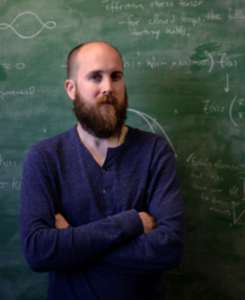
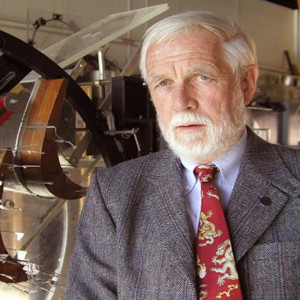

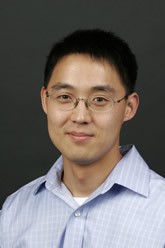
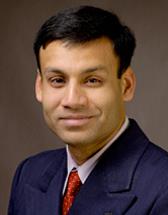 Abstract: Blood clots are required to stem bleeding and are subject to a variety of stresses, but they can also block blood vessels and cause heart attacks and strokes. We measured the compressive response of human platelet-poor plasma (PPP) clots, platelet-rich plasma (PRP) clots and whole blood clots and correlated these measurements with confocal and scanning electron microscopy to track changes in clot structure. Stress-strain curves revealed four characteristic regions, for compression-decompression: 1) linear elastic region; 2) upper plateau or softening region; 3) non-linear elastic region or re-stretching of the network; 4) lower plateau in which dissociation of some newly made connections occurs. Our experiments revealed that compression proceeds by the passage of a phase boundary through the clot separating rarefied and densified phases. This observation motivates a model of fibrin mechanics based on the continuum theory of phase transitions, which accounts for the pre-stress caused by platelets, the adhesion of fibrin fibers in the densified phase, the compression of red blood cells (RBCs), and the pumping of liquids through the clot during compression/decompression. Our experiments and theory provide insights into the mechanical behavior of blood clots that could have implications clinically and in the design of fibrin-based biomaterials. As a second topic we will consider thermal fluctuations of lipid bilayer membranes. Typically, membrane fluctuations are analyzed by decomposing into normal modes or by molecular simulations. We propose a new approach to calculate the partition function of a membrane. We view the membrane as a fluctuating elastic plate and discretize it into triangular elements. We express its energy as a function of nodal displacements, and then compute the partition function and covariance matrix using Gaussian integrals. We recover well-known results for the dependence of the projected area of the membrane on the applied tension and recent simulation results on the dependence of membrane free energy on geometry, spontaneous curvature and tension. As new applications, we compute elastic and entropic interactions of inclusions in membranes.
Abstract: Blood clots are required to stem bleeding and are subject to a variety of stresses, but they can also block blood vessels and cause heart attacks and strokes. We measured the compressive response of human platelet-poor plasma (PPP) clots, platelet-rich plasma (PRP) clots and whole blood clots and correlated these measurements with confocal and scanning electron microscopy to track changes in clot structure. Stress-strain curves revealed four characteristic regions, for compression-decompression: 1) linear elastic region; 2) upper plateau or softening region; 3) non-linear elastic region or re-stretching of the network; 4) lower plateau in which dissociation of some newly made connections occurs. Our experiments revealed that compression proceeds by the passage of a phase boundary through the clot separating rarefied and densified phases. This observation motivates a model of fibrin mechanics based on the continuum theory of phase transitions, which accounts for the pre-stress caused by platelets, the adhesion of fibrin fibers in the densified phase, the compression of red blood cells (RBCs), and the pumping of liquids through the clot during compression/decompression. Our experiments and theory provide insights into the mechanical behavior of blood clots that could have implications clinically and in the design of fibrin-based biomaterials. As a second topic we will consider thermal fluctuations of lipid bilayer membranes. Typically, membrane fluctuations are analyzed by decomposing into normal modes or by molecular simulations. We propose a new approach to calculate the partition function of a membrane. We view the membrane as a fluctuating elastic plate and discretize it into triangular elements. We express its energy as a function of nodal displacements, and then compute the partition function and covariance matrix using Gaussian integrals. We recover well-known results for the dependence of the projected area of the membrane on the applied tension and recent simulation results on the dependence of membrane free energy on geometry, spontaneous curvature and tension. As new applications, we compute elastic and entropic interactions of inclusions in membranes.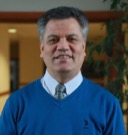 Abstract: Multiphase flows are ubiquitous in a wide range of natural processes and engineering applications. Although efforts to compute multiphase flows started as early as the beginning of the computational fluid dynamics (CFD), the progress was rather slow mainly due to the existence of interfaces that continuously evolve in time and often undergo large deformations leading to topological changes such as breakup and coalescence. In the case of confinement, the fluid-fluid interface strongly interacts with the complex channel wall and usually involve small features such as thin liquid films that are difficult to resolve computationally. Multi-physics effects such as soluble surfactant, phase change, chemical reactions, moving contact line and viscoelasticity make the problem even more complicated and challenging for computational simulations. In this talk, I will discuss our work towards addressing these challenges. I will first describe a front-tracking method developed for particle-resolved simulations of multiphase flows, where all relevant continuum length and time scales are fully resolved in all phases. Special emphasis will be placed on treatment of soluble surfactants, viscoelasticity and phase change (droplet evaporation and burning). Sample results will be presented for various multiphase flows encountered or inspired by bio/microfluidic applications. The microfluidic applications generally involve highly laminar low Reynolds number flows but the numerical method is not restricted to low Reynolds numbers and can be directly applied to turbulent multiphase flows at moderate and even high Reynolds numbers depending on available computational resources. Sample results will also be presented about effects of soluble surfactant on weakly turbulent bubbly flows at moderate Reynolds numbers. The talk will conclude with future directions and applications of presented method to large multi-scale and multi-physics problems of practical interest.
Abstract: Multiphase flows are ubiquitous in a wide range of natural processes and engineering applications. Although efforts to compute multiphase flows started as early as the beginning of the computational fluid dynamics (CFD), the progress was rather slow mainly due to the existence of interfaces that continuously evolve in time and often undergo large deformations leading to topological changes such as breakup and coalescence. In the case of confinement, the fluid-fluid interface strongly interacts with the complex channel wall and usually involve small features such as thin liquid films that are difficult to resolve computationally. Multi-physics effects such as soluble surfactant, phase change, chemical reactions, moving contact line and viscoelasticity make the problem even more complicated and challenging for computational simulations. In this talk, I will discuss our work towards addressing these challenges. I will first describe a front-tracking method developed for particle-resolved simulations of multiphase flows, where all relevant continuum length and time scales are fully resolved in all phases. Special emphasis will be placed on treatment of soluble surfactants, viscoelasticity and phase change (droplet evaporation and burning). Sample results will be presented for various multiphase flows encountered or inspired by bio/microfluidic applications. The microfluidic applications generally involve highly laminar low Reynolds number flows but the numerical method is not restricted to low Reynolds numbers and can be directly applied to turbulent multiphase flows at moderate and even high Reynolds numbers depending on available computational resources. Sample results will also be presented about effects of soluble surfactant on weakly turbulent bubbly flows at moderate Reynolds numbers. The talk will conclude with future directions and applications of presented method to large multi-scale and multi-physics problems of practical interest.